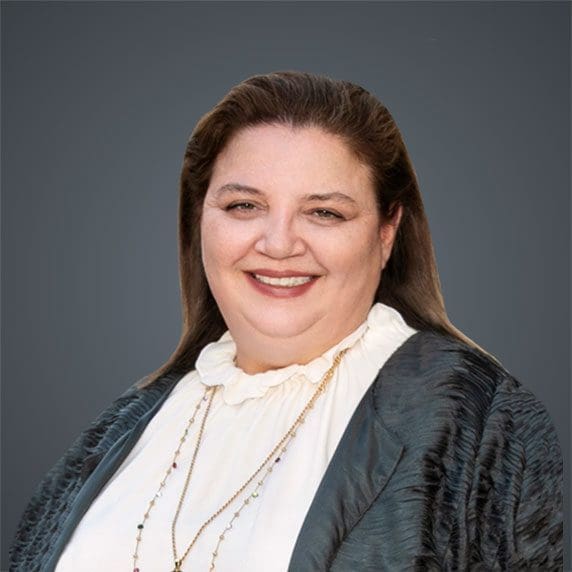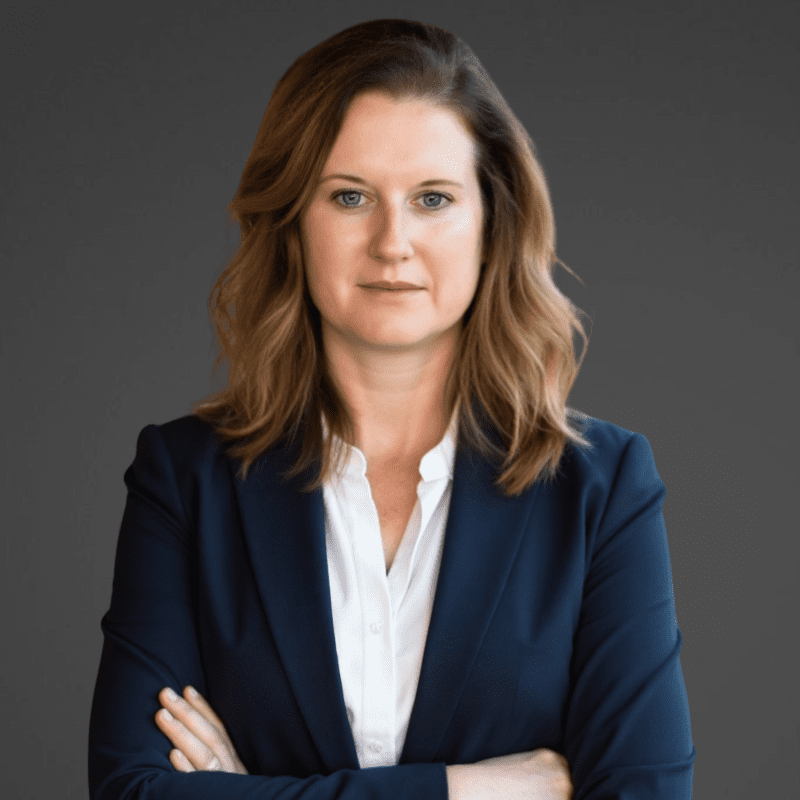The First Ever Mutual Fund to ETF Conversion
A Q&A With The Lead Attorney, Alexandra Alberstadt
Practus, LLP, announced the effectiveness of certain filings with the Securities and Exchange Commission that will allow for the first ever mutual fund to exchange-traded-fund (ETF) conversion on behalf of client Guinness Atkinson Asset Management and SmartETFs, its family of exchange-traded funds.
Recently, we sat down with our very own Alexandra Alberstadt to get her first-hand account of spearheading this groundbreaking conversion in close collaboration with her client.
Why was your client focusing on Exchange Traded Funds?
Alexandra Alberstadt: The ETF is a relatively new development in the context of the historical existence of pooled vehicles. Pooled investment vehicles have been around for a long time, even prior to the Investment Company Act of 1940, and have proven benefits for diversification and risk management. The ETF is one of the newer creations, the first one in the US was listed in 1993, and it has really become a very significant part of the retail investment environment, in the US and globally. Many ETFs are cheaper to operate than mutual funds. Exchange trading makes people feel that they can get out of the investment in the middle of the day.
Who was your client for this conversion? How long have you’ve worked together?
Guinness Atkinson Asset Management. They have been around for 28 years in the US. I’ve worked with them off and on since 1999, as adviser counsel and as fund counsel. For the last eight years, I’ve been the primary counsel to the Funds.
But what’s important about them is they’re thematic investors. Their entire business is built on this idea of investing in human progress. That has been a core element of their business since they started.
Now, as they’re building out their SmartETFs family of funds, each fund will be designed to select investment opportunities thematically, rather than by industry or by index.
Is Guinness Atkinson known for being forward-thinking?
Yes, I think forward thinking is a really good phrase to describe them. They’re innovative. They constantly revisit why things have to be done a particular way, and they have been looking at disruption as an economic influence in their particular areas of focus. They have a long-term view. They stake their ground and stick to the knitting, and make investment decisions based on their deep research and outlook on companies.
A no-load fund group like Guinness Atkinson had an easier approach to converting funds into exchange traded funds because their existing mutual fund structure was already the cleanest possible on external fees. They are a no-load complex with expense caps. Investors are already getting a good deal from them, so, really, we were exploring whether we could structure this for investors to get an even better deal.
Who first proposed the conversion? Your client? Or did you bring the idea forward?
Early on we had collaboratively done some research. I remember we just talked about the idea. The primary drive came from Jim Atkinson, trying to figure out if there was a way we could do this. They had gotten ready to launch an ETF complex in 2013, but we had setbacks.
The idea of a conversion wasn’t entirely new. Back in 2008 – 2009, there were attempts by another firm to do a conversion that never really went anywhere. In 2010, Huntington announced they were going to do it, but then in 2012, the SEC denied their relief. The atmosphere at the SEC was different then, and there were only a few actively managed ETFs. Most ETFs in the US were index funds. There were regulatory burdens so that even if you had no ingenious elements, it could still take a year and significant legal costs to get an ETF complex exemptive order. With a new idea, it could go on much longer. The exemptive process is serious. You are getting an exemption from securities laws. About six years ago, people starting floating the idea of getting rid of the systematic exemptive process for ETFs, and that became the ETF rule proposal and eventually, the new ETF rule, Rule 6c-11.
The ETF industry matured in a way that let this conversion feature become ripe. It’s a combination of things: Part of it is that ETFs, funds and investors have all evolved, part of it is evolutions in technology and information, part of it is the new spirit at the SEC for the past five or so years – very focused on data, very focused on how data helps investors, maybe more open to this concept and to other concepts that improve existing systems. And then the new Rule 6c-11.
There is a sense that the SEC is bringing oversight into a more modern era. There is huge consolidation in the fund industry in the US. Even very large advisers are interested in this conversion process, because this is a way to offer investors a better outcome by lowering costs. And more new advisers are looking at ETFs in particular as a cost-effective way to launch funds using specific strategies.
It sounds like you might have been expecting pushback based on prior history.
I ‘ll be quite honest. I was surprised that the SEC was so open to this. I wasn’t skeptical, because when we set up the first call, they had already shown a willingness to look at past practices through a new lens. They are really acting in a more transparent way. I was just not prepared for how open they were to this idea, because it seemed like they had rejected it before. We had to show them how this could work. We had to show them where the holes could possibly be. Their job is to protect investors. It was our burden to show them that investors would not only not be harmed, but they would be benefited.
Why did Guinness Atkinson wish to convert? What advantages did they seek for the firm and their clients?
In this situation, because Guinness Atkinson wanted to offer these strategies in the ETF structure, converting is better for the investor. They could have just started clone ETFs of the strategy, but that would not make sense for this investor base. It’s better for the investor on the tax side significantly. I think the tax benefit for ETFs is huge and the cost savings are huge as well – every basis point in cost avoided means better performance. Those are my top two.
How significant are the tax savings for investors?
We’ve used a structure that’s a tax-free reorganization, so there’s no tax consequence to our investors from the conversion itself. That means that they have the same basis in their shares of the ETF that they had when they were a mutual fund shareholder.
It’s important to understand the tax advantages of the ETF structure. In a mutual fund, shareholders buy shares for cash and the fund pays out redemptions in cash. That means the mutual fund sells portfolio securities to pay for redemptions. Those sales create gain or loss, realized and recognized for tax purposes.
The mutual fund must then distribute such taxable gains to shareholders. Sometimes a fund sells shares of an underlying holding because the portfolio manager decides it’s not a desirable investment anymore. And that sale also realizes and recognizes a gain or loss. In an ETF, the purchase is not in cash, it’s a transfer by a limited number of industry participants of shares of the ETF’s underlying portfolio securities. The redemption is a transfer out of the ETF of securities. So, there is no sale of portfolio securities to pay redemptions for the most part. All of this means that one shareholder’s investment decision (to buy or sell shares) is not affected by another shareholder’s activity.
Another motivation is the ability to act mid-day. It’s important to understand the investor base. Many retail shareholders are much more involved in their own investment activities than in the past. They also prefer the ability to act on their decisions and get finality. So, ETFs are bought and sold during the trading day at a market price.
All of these components of ETFs also make them more desirable to allocation algorithms. So professional investors who are advising their clients on allocation also prefer lower cost, externalized tax impacts of other shareholders and intraday trading.
Who did you work with on the client side?
Jim Atkinson is the key person at Guinness Atkinson. He has a long history in the fund business and he and Tim Guinness formed Guinness Atkinson many years ago with this innovation angle always in mind. Jim is really the prime mover of the ETF strategy and he’s a driver behind the SmartETFs, which are expanding the firm’s theme of human progress into new directions. Tim is obviously very involved as well, on the investment strategy side.
How did you start to build the case for an accepted legal framework for such a conversion?
We ended up locating a couple of examples of other transactions where funds changed themselves after their initial offerings. We said if we can just put all these pieces in a row, could we get this through? It’s like a puzzle, right? If you can get the puzzle pieces identified and sorted and then figure out how can we put all these different elements of these transactions together to get to our transaction result, we can do this. Jim and I exchanged different Edgar filings, looking at all sorts of open-end, closed-end, private fund transactions, with and without proxies, finding examples that had elements of what could work for these funds. We wrote outlines, we made timelines, we talked to service providers, we talked to the Board… then we reached out to the SEC to find out if they were open to this idea. And they were!
We started with some funds that became interval funds. We looked at one specific transaction involving an open-end fund that became a closed-end due to an investment that resulted in a litigation windfall (that one was huge). But we looked at all sorts of fund mergers, and we looked at more direct filings. We looked at a lot of the underlying documents for these funds and we studied our own fund documents. We had to break this down not only from the federal regulatory perspective but also from the fund’s own governance documents. Then we had to decide if this was something to proxy or not proxy. For these funds, we concluded that it was better to merge the existing fund into a shell that would be an ETF, but that is not the only idea we considered. We put together a concept outline that detailed how the different pieces of the transaction were either authorized by rules, by the fund’s governing documents, or by other transactions.
Do you recall any significant problems or challenges along the way?
One of the hurdles to this is how do you make sure you have a solid plan in place to transition direct shareholders? For everybody who has their mutual fund shares in the brokerage account, it’s easy to do a conversion because the ETF shares work just like any merger. So, that’s really easy, the broker just swaps shares of the Fund for the ETF and it’s a computerized process.
Direct shareholders are different. Direct shareholders are people who buy or sell mutual funds directly from the fund company and they are usually retail investors. ETFs don’t sell like that – they only sell shares to authorized participants, usually other financial industry participants. We have direct shareholders. To make the conversion seamless, we need them to move their shares to a brokerage account. If a direct shareholder doesn’t identify a brokerage account, then you have to figure out a way to resolve that problem. We found a solution that had been used by closed-end funds and we decided to try and use that solution here. We were able to convince the SEC that if the solution can work for closed-end funds, it can work for an exchange traded fund. That was kind of our biggest hurdle.
Without a brokerage account, how are you moving those direct shareholders over?
Our solution was to use a secondary transfer agent to hold the ETF shares for direct shareholders who don’t transfer their shares to a brokerage account before the closing. Then, the shareholder can instruct that secondary transfer agent to move the shares later or to sell them and send back the proceeds. Jim is working through communicating with direct shareholders, and of course, the investment management company risks that shareholders will choose to redeem their holdings instead of receiving ETF shares —but, it was a risk Guinness Atkinson was willing to take.
Was this conversion exciting to work through?
You know, it is exciting. It’s about finding a solution to a problem here. We have a really interesting problem. The reality is that the world is evolving to exchange traded funds. Investment advisers who are already servicing mutual funds need to find a solution to be able to deliver the same high-quality services to their clients. This is an effective way to deliver really good value to the shareholders because you’re giving them the ETF, you’re improving their exit opportunities, you’re reducing the costs, you’re removing the tax impact of other investors. For investors, this is a total win. There are not very many public equity-based strategies that need to be delivered in a mutual fund.
Do you see other investment advisers following this model? Converting mutual funds to ETFs?
Yes, we know many other investment advisers are following this and are already in the process. Several of them have contacted Practus. For a lot of advisers who are looking to deliver a really good value to their shareholders, this is going to be an appealing option.
I think the ETF model is very desirable. And the question is, how do you do this? Do you start an ETF complex and hope to gather assets from zero? Or do you convert your existing product because it’ll work better in the ETF model? Some advisers have mutual funds and ETFs and for them, they have a direct window on how well the ETF model can work, and will probably look to move some mutual funds over where the impact is real and where their distribution strategies can handle the change.
Were you a partner at Practus throughout the conversion process?
I actually started this conversation when I was in a prior position, and I brought it over here to Practus with my relationship with Guinness Atkinson. I was making a change in law firms for personal reasons and I wanted to keep working on this interesting conversion challenge. Also, Jim and I have been working together on ETF strategies since 2012 or 13. These types of innovations and new strategies are basically crying out for the more agile legal environment firms like Practus provide, and it’s not only because we can work at a lower cost, but also, I have access to a really broad practical experience base among my partners. We have big firm, small firm, in-house, series trust, compliance and regulatory expertise, and we are collaborating differently here.
Was Practus supportive of the conversion project?
One hundred percent. They understood exactly what we were going to be doing, that we were going to have this new type of thing coming out. They would be able to give me access to resources to talk through some of the issues. I’ve done that with some of my partners, and that has been priceless. This transaction is all in the details, so it has been wonderful to have access to people who have been through the specific nuances.
The nice thing about Practus is that you have a lot of depth and knowledge and experience in here, and it touches on all the different pieces of the investment advisory business. There’s a lot of layers of administration in a big firm. We don’t have that here. It’s not just because we’re smaller, it’s because of the approach—it’s just different.
I really have been totally happy here. This firm plays into my strengths. If I had a question about one broker dealer issue, I could pick up the phone and call my partner and get the answer. If I have a question about which particular approach is going to be more successful, I can call up somebody else (or two or three people) and convene a 10-minute phone call and talk about the issue. There is a different openness to collaboration here and at the same time, for me, even greater depth and diversity of experience. That’s huge because while Jim and I worked the conversion through from different angles, my partners helped me work through the in-house perspective, or a broker-dealer perspective, and their additional advice came from hands-on experience.
Did any other attorneys at Practus play a role in this mutual fund to ETF conversion?
Of course. Bob Elwood is the tax partner who is doing the tax work on this. But, then, we also had a couple of other attorneys who’ve worked with me and contributed on some of the finer points. John Lively has been a good sounding board, and Ethan Corey has been great on helping me think through the transfer agent and broker dealer aspects. But I’ve had a number of group reach-outs and everyone who is available comes on deck.
How long did the conversion take? Were there any surprises or “left turns” along your way?
ALEX: The structure of the plan of the conversion has not really altered a lot but we have had a lot of twists and turns around the disclosure. That was an interesting aspect because we actually thought this was not going to be a big deal—like the disclosure was pretty straightforward. There’s no proxy vote here. Their choice is to stay in the fund and be converted or to leave. But the conversations from initial to first filing were about a year, and then the disclosure process has been around 6 months. This was selective review, and there was no guarantee of a timeline. And that’s a normal situation with the SEC when you are doing something new. The followers will have an easier time because of what we did.
How does it feel now to have the transaction complete?
Well, it’s not really complete until the closing and really, for me, I’m going to hold my breath until the ETFs are up and trading. But, I am excited about it. It’s been hugely intellectually motivating to get this project through the gate because we’re still learning as we are doing this. When you’re going to the SEC with a new idea, it’s like a horserace. You are in that area behind the starting gate for a long time. Then you get some sign that its time, and you make your first filings, and that’s like you are now in the stall and you’re just itching to go forward as you continue through the filing process. But that gate is staying closed until effectiveness. As you get closer to effectiveness, you are re-focusing on the operational work streams to make sure everyone is ready, and that has also been exciting. Then, when effectiveness comes through, that is the gate lifting, now the race is starting. I’m not popping corks yet, but I have the good stuff getting cold.
Nice. What’s next?
Well, we’re actually already working on a couple more conversions now. Jim has a lot of other ideas percolating and we’re putting those puzzles together now. More exciting things to come.








